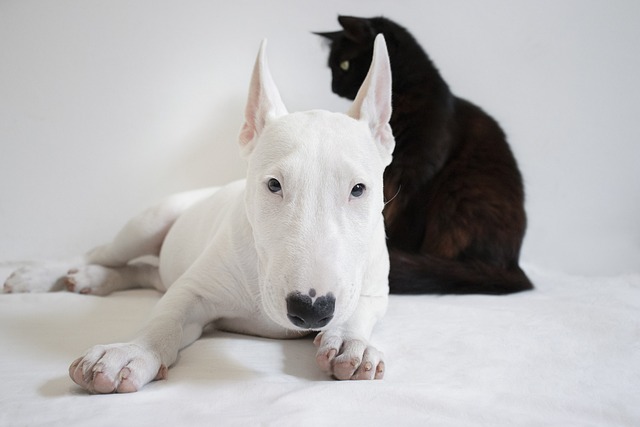
How can I tell if my dog's heatstroke is serious
Let’s be real: It’s a sticky August morning in Los Angeles, and you took your 2-year-old Golden Retriever, Max, for a walk a little later than usual
I sat with my friend Lena at a coffee shop last week, where she was scrolling through allergy blogs—her 6-year-old son, Leo, had started sneezing and itching every time he played with their new rescue dog, Max. “I keep reading about dog allergies, but what’s the most common one?” she asked, rubbing Leo’s red eyes. If you’re a new U.S. dog owner dealing with allergies (either for yourself or your family), this question is crucial. The answer might surprise you: It’s not dog hair itself, but dog dander—tiny, flaky bits of skin that dogs shed year-round. Understanding this common allergy, and how to manage it, lets you keep your pup while keeping allergies in check.
To break down why dander is the top culprit: Many people think they’re allergic to dog hair, but hair is just a carrier. Dander is loaded with proteins (like Can f 1) that trigger the body’s immune system to overreact—causing sneezing, itchy skin, or even asthma. Unlike seasonal allergies, dog dander allergies are year-round because dogs shed dander constantly, even “hypoallergenic” breeds (no dog is 100% hypoallergenic—they just shed less dander). Lena’s doctor explained that Max’s dander was sticking to Leo’s clothes and the couch, which is why Leo’s symptoms got worse at home—dander lingers on fabrics for weeks if not cleaned regularly.

Here’s how to identify and manage the most common dog allergy (dander), step by step: First, confirm it’s dander (not something else). Watch for symptoms that happen only around dogs: sneezing, runny nose, itchy eyes, or a rash on skin that touches the dog. If symptoms happen outdoors too, it might be pollen. Lena noticed Leo was fine at school but miserable at home—clear sign it was Max’s dander. Second, reduce dander in your home. Vacuum floors and furniture 2–3 times a week (use a HEPA filter, which traps tiny dander particles). For apartment living, wash your dog’s bed and your own sheets weekly in hot water (130°F+ kills dander). Avoid carpeted floors if possible—they trap dander more than hardwood. Third, groom your dog regularly. Brush them outside (to keep dander from spreading indoors) 3–4 times a week, and give them a gentle bath every 2–4 weeks (use a hypoallergenic shampoo—over-bathing dries their skin, making them shed more dander). Lena started brushing Max on their balcony, and Leo’s symptoms got better within a week. Fourth, create “allergy-safe” zones. Keep your dog out of bedrooms or playrooms where sensitive family members spend time—this gives lungs a break from dander.
Never rehome your dog without trying management first—many families thrive with simple changes. Also, remember: Dogs can have allergies too (to food or pollen), but human allergies to dander are far more common. When walking your dog, carry extra poop bags (cities like Denver fine $100 for leaving messes) and wipe their paws with a damp cloth after walks—this removes pollen that can stick to their fur and worsen dander allergies. Keep your dog’s rabies vaccine up to date (required nationwide)—vet visits are a good time to ask about dander-reducing supplements (like omega-3s, which improve skin health and reduce shedding). And never punish your dog for triggering allergies—they can’t control dander, and punishment violates U.S. animal welfare standards.
After a month of grooming and cleaning, Leo was playing with Max again without sneezing. The most common dog allergy doesn’t have to come between you and your pup—with simple steps, you can keep everyone happy and healthy.

Let’s be real: It’s a sticky August morning in Los Angeles, and you took your 2-year-old Golden Retriever, Max, for a walk a little later than usual

You're enjoying a summer afternoon at the park when you notice your dog has stopped panting and appears disoriented - their gums are bright red

Let’s paint the picture: You’re in your Denver apartment, watching your 4-year-old Boston Terrier, Ruby, plop down mid-play session with her favorite toy

Many dog owners notice their pets nails seem shorter after regular walks,but how much does this daily activity actually help?The answer depends on where you walk—concrete sidewalks or asphalt streets gently file nails as a dog's paws hit the ground

Most dog owners notice their pup scooting across the carpet at some point, but few connect it to impacted anal glands. These small sacs near a dog’s rectum secrete a scent for marking territory

Most vets agree that regular dog teeth cleaning is key to avoiding painful dental issues later. For healthy adult dogs, a professional cleaning at the vet’s office every 12 to 18 months usually works well.